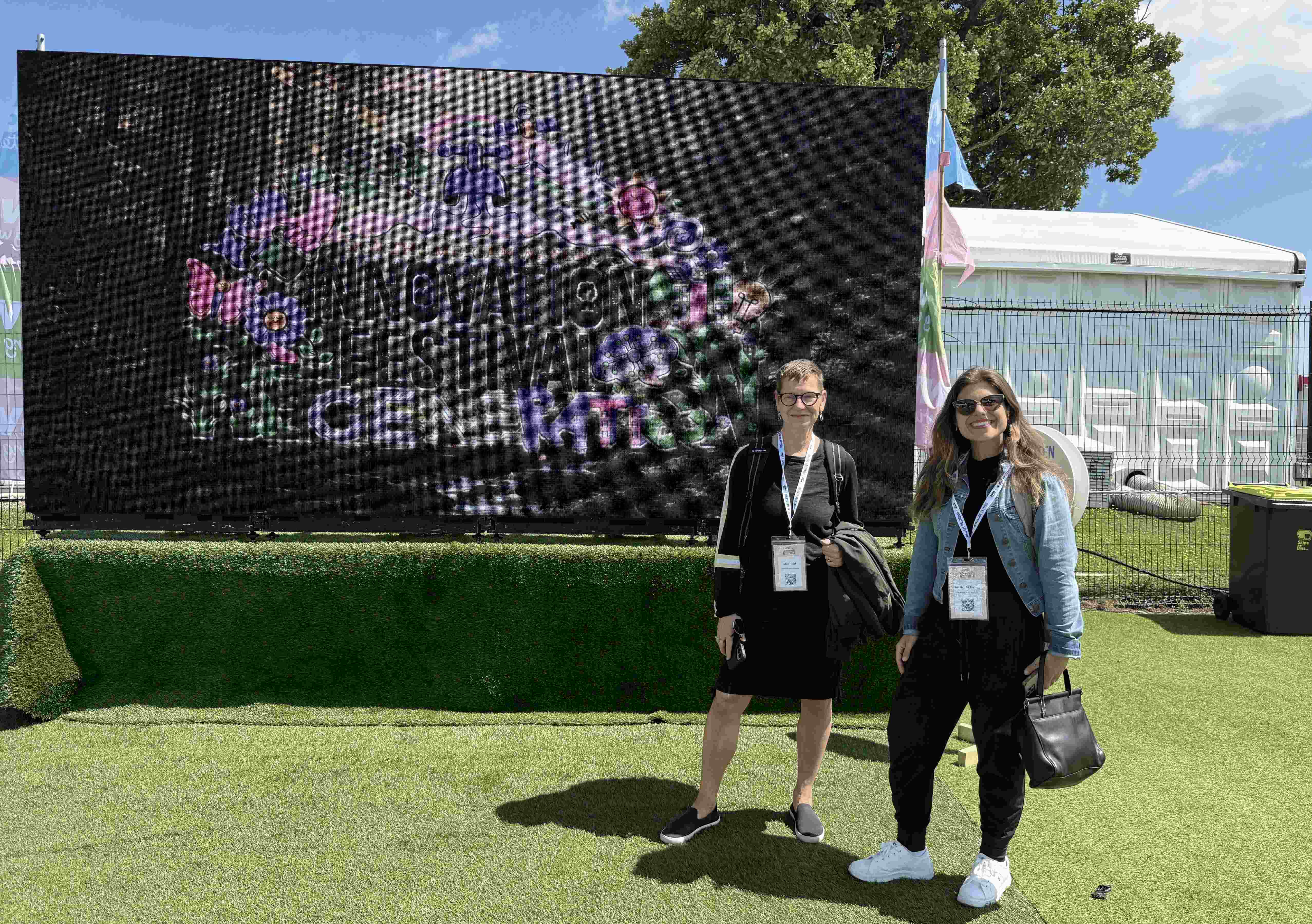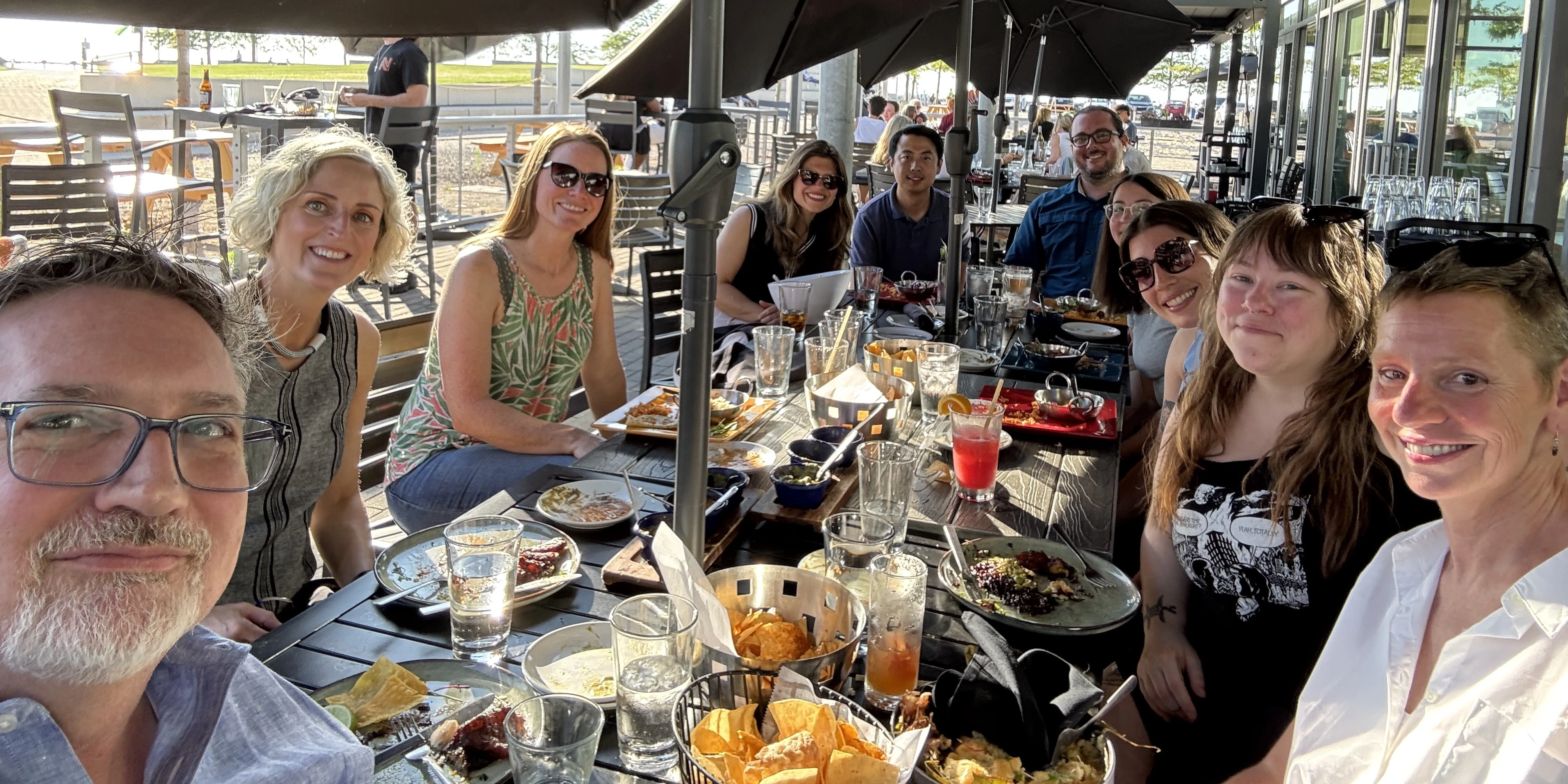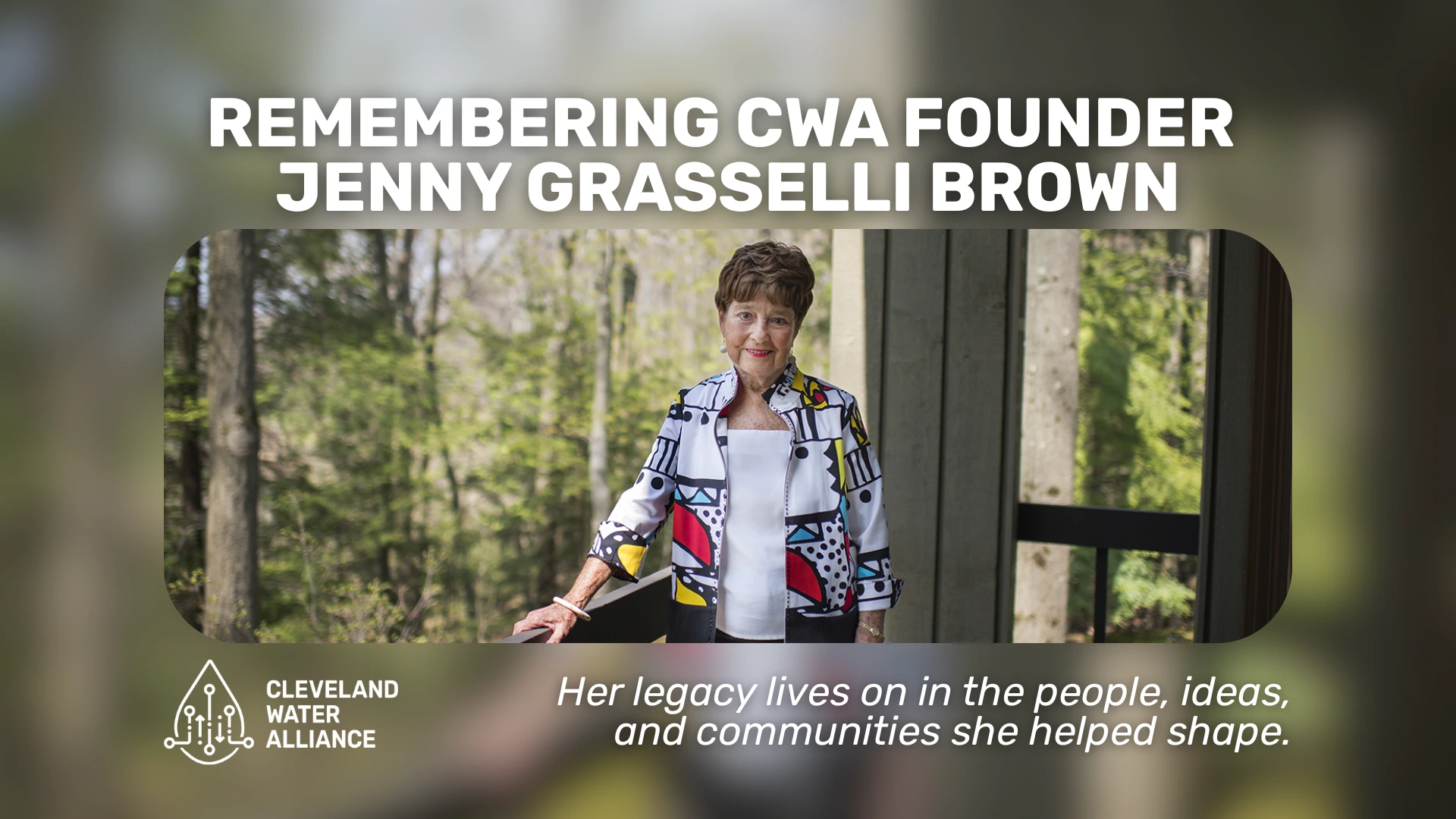As Cleveland Water Alliance establishes its Smart Lake Erie Watershed Initiative, they pull their buoys from Lake Erie and reflect on the successes of this season and bright future opportunities.
Listen to this article

While many of us were out enjoying the summer weather in northeast Ohio, a team of engineers and business leaders was busy developing and deploying dozens of new high-tech sensors and buoys along the Lake Erie coastline as part of the Smart Lake Erie Watershed Initiative. The new state and federally-funded multi-million dollar initiative, managed locally by Cleveland Water Alliance (CWA), is merging the region’s growing tech community with the need for more observations of the 7th largest freshwater lake in the world. Though home to a robust fishing and tourism industry, Lake Erie suffers from annual recurrence of toxic algal blooms, large areas of low-oxygenated bottom waters, and impacts from agricultural and urban runoff.
The new infusion of technology is welcomed by area boaters, fishermen, weather forecasters, and the marine industry that now have ready access to real-time conditions from a network of 15 buoys along Ohio’s nearly 200 miles of coastline, 9 of which are newly deployed this year. Although similar buoys were deployed near water intakes in Toledo and Cleveland to monitor water quality, these new stations build out a region-wide observing network across the entire Ohio coastline, ensuring at least one buoy per shoreline county along the lake near Oregon, Port Clinton, Cawtawba/Erie Islands, Huron, Sheffield, Lakewood, Euclid, Fairport, and Ashtabula. This first-in-the-nation approach to building out a dense freshwater observing system has been championed by CWA with the support of many local, municipal, state, and federal organizations, industry experts, high-tech sensor suppliers, local non-profits, and university researchers. This cluster of public and private organizations collaborated on identifying key locations and specialty suppliers and set out to eliminate barriers that have historically siloed cross-organization deployments and multi-agency collaboration. The new sensors and instruments follow on from earlier work this summer to build out a regional telecommunications infrastructure for Lake Erie to connect these and other sensors to the internet using new low-cost and long-range telecommunications equipment.
Until this summer, there were few observations of waves and water quality conditions near the Erie Islands, which cater annually to hundreds of thousands of tourists, numerous car and passenger ferries, dozens of world-class fishing tournaments, and a growing kayaking and paddleboard community. Bill Market, owner of Miller Boat Line, says the new buoys and weather stations help his captains understand weather conditions on the water and keep weather-related closures to a minimum. Market said, “Every hour we can’t bring passengers to the island is another hour that businesses on the island can’t serve those customers. We need to watch the weather closely, and we’re happy to see more observations of winds and waves in this part of the lake.”
Data from the new buoys are made available freely to boaters via the internet (https://limno.io), and through many public weather websites, including the NOAA National Weather Service (NWS), National Data Buoy Center, and the United States Coast Guard. Locally, the NWS office in Cleveland uses observations from the new buoys every day to keep an eye on conditions offshore and track fast-moving storms headed toward land. Kirk Lombardy, Meteorologist at NWS Cleveland said, “We have always been seeking more observations to aid us in forecasting winds and waves on Lake Erie over the years. We had very few reports of what is going on offshore as far as wave heights and approaching high winds.” Lombardy added, “In addition, a very important problem we were faced with over the last few years is abnormally high-water levels on Lake Erie. New water level data at more locations would be extremely helpful to determine inundation flooding along the shore from lake seiches.”
Ebie Holst, Director of Clusters and Innovation with Cleveland Water Alliance, credits local government and business leaders for providing critical input to the successful build-out of the region-wide system. “Developing sensors that will give us the critical insights we need to protect public health, safeguard our economic interests and strengthen our region's climate resilience isn’t easy. We are attracting innovators from around the world and are helping to strengthen the local workforce and supply chain needed to treat, restore, and manage our area waterways.” Holst added, “When we look at regional organizations like Cleveland Water, Northeast Ohio Regional Sewer District, Cleveland Metroparks, and the Ohio Department of Natural Resources, these are some of the largest managers of water and natural resources in the Great Lakes region. A collaborative approach is needed to help drive innovation and inspire the next generation of water stewards that will increasingly rely on automated, real-time observations to manage complex water challenges.”

Since its inaugural 2017 Erie Hack competition, CWA has inspired new tech startups to locate in the region, as well as attracted and retained a talented water economy workforce. One such startup is Freeboard Technology, located in Mid-Town - Cleveland’s growing tech center - just east of downtown. The sensor-focused company is a subsidiary of the consulting firm, LimnoTech, which has studied and researched Lake Erie’s water issues since its inception in 1975. Ed Verhamme, President of Freeboard and Principal at LimnoTech, said it's no surprise that Lake Erie is seen as the smartest of the Great Lakes. “There are so many people that are affected every day by conditions on Lake Erie, and people’s appetite for data keeps growing with every new station. What’s unique about this new program is the connection to a local supply chain and skilled workforce to maintain this equipment.” Verhamme said.
Freeboard Technology was able to work locally to build batches of new equipment based on needs from many organizations and worked with CWA to identify local businesses and non-profits that can help maintain the equipment. Two local organizations include Cleveland Marine Towing, a Boat US affiliate, and Argonaut, a maritime and aerospace organization partnering with Cleveland Metropolitan School District in the Davis Aerospace and Maritime High School. Drew Ferguson, CEO of Argonaut, couldn’t think of a better opportunity for area students to apply and learn new skills. “We can only do so much in the classroom to inspire local youth to pursue careers in the marine industry. Our work with Freeboard and Cleveland Water Alliance allows our students to apply their high-tech skills to this local buoy network that impacts millions of people's lives across the region. Now that’s rewarding work for our students.”
The new buoys deployed this summer have recently been retrieved in preparation for the winter and are expected to return to Lake Erie in April 2023. Over the winter, the buoys will be cleaned, stored, and outfitted with additional sensors as the regional testbed program grows, pushing the limits of technology and the need for more data about the lake. One potential application of the new nearshore buoys is tracking fish movements across the lake in real-time in partnership with the Great Lakes Acoustic Telemetry Observing System, which has implanted thousands of tracking tags in several species of fish.
CWA and its tech cluster welcome new partners and innovators looking to grow the use of water technology in the region.
—
Written by our partner Ed Verhamme
President at Freeboard Technology, Principal/Senior Engineer at LimnoTech



.svg)







